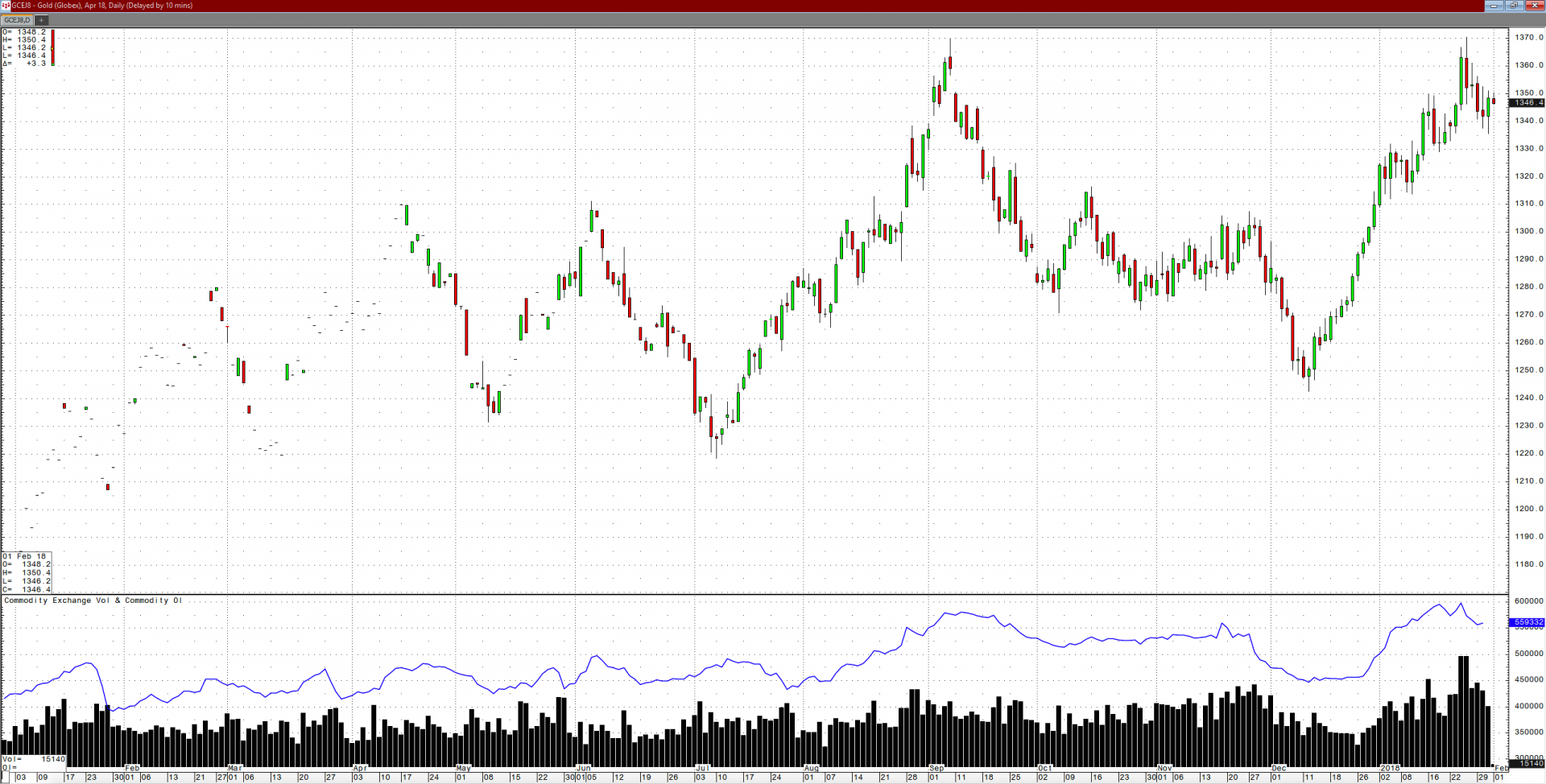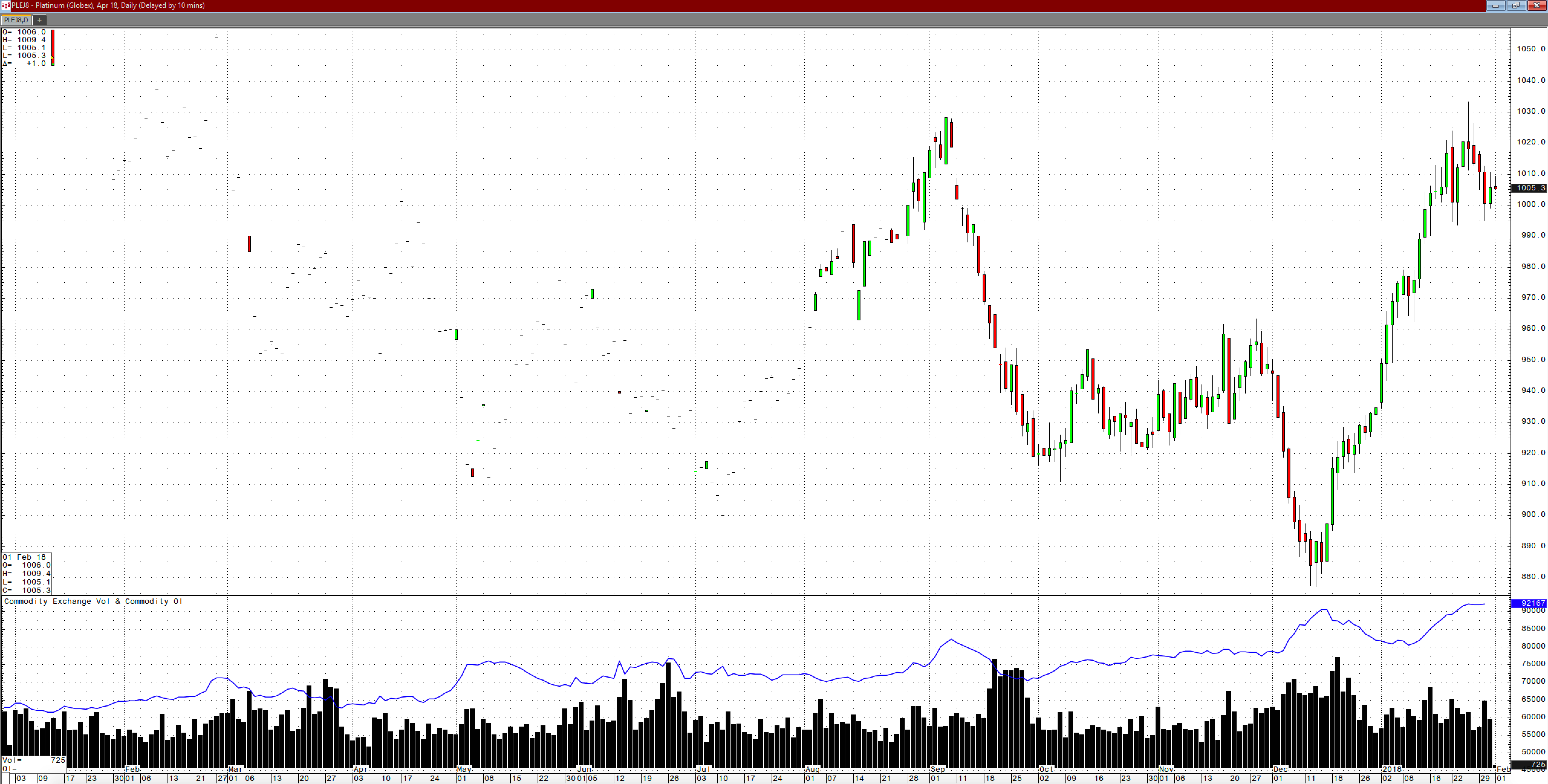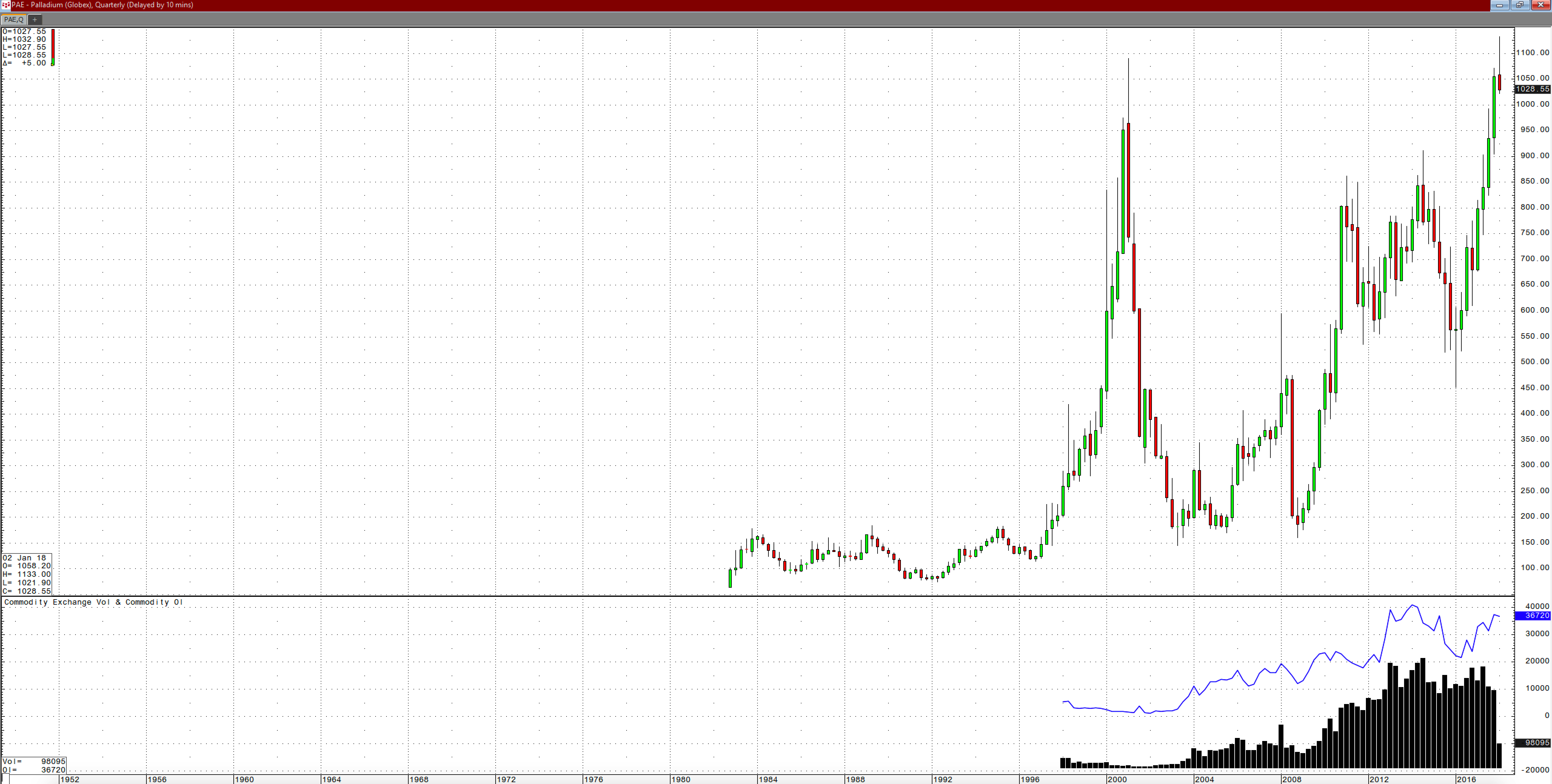It has been a bullish start to 2018 in the precious metals sector. Palladium began the year with a new record high, and the prices of gold, silver, and platinum have all appreciated after having reached lows in mid-December. Over the past three years, the precious sector of the commodities market has traded to lows during the final month of the year and then took off to the upside in the new year.
The path of least resistance for the prices of gold, silver, and platinum have all reacted to the dollar and interest rates. A weaker dollar tends to support the metals, and higher real rates of interest often cause downside pressure on prices. It was the dollar and interest rates at the end of 2015, 2016, and 2017 that contributed to price weakness and those same factors have caused rebounds each January.
A Pattern for the Past Three Years
At the end of 2015 and 2016, the dollar was on its way to highs of 103.815 on the dollar index. The higher dollar depressed the prices of precious metals during the final months of those years. At the same time, the Federal Reserve began increasing short-term interest rates in December 2015 and raised the Fed Funds rate by twenty-five basis points, a total of five times. Three of the five rate hikes came during the final month of the past three years, which caused temporary lows in precious metals prices.
Meanwhile, while lows came in December, the sector has posted impressive gains each new year, and 2018 has been no exception.
Gold Potentially Close to a Breakout
Gold fell to its most recent low at $1236.50 on the continuous futures contract in mid-December on the day that the Fed pushed the short-term rate to 1.25%. Since then, it has been off to the races for the yellow metal.
As the daily chart of April COMEX gold futures highlights, the price rose to a high of $1370.50 on January 25, just $7 below critical technical resistance at the 2016, post-Brexit high of $1377.50 per ounce. At the same time, open interest in gold futures has increased from 446,618 on the day of the December low to 573,135 contracts on January 25, a rise of 28.3% while the price was 10.3% higher. Rising price alongside increasing open interest is typically a bullish sign for a futures market. As of January 31, the price corrected back to the $1346.50 level and open interest declines, which is not necessarily a signal of an emerging bearish price trend in gold.
Silver Trails
Over the same period, the price of silver has appreciated, but it trails gold.
As the daily chart illustrates, silver hit a low of $15.635 on the active month March futures contract on December 12. Silver had been running into technical resistance and price congestion between $17.30 and $17.50, but on January 25, it climbed above that level and peaked at $17.705 per ounce. While gold’s most recent high was only $7 below the 2016 high, silver at $17.705 remained $3.39 below its apex from that year. However, silver has a long history of volatile price variance on the up and downside, and we could see lots of action on the silver market in the coming weeks and months if gold can break to the upside above its critical resistance level. Open interest in silver has been on either side of the 200,000-contract level. Silver, along with gold, dropped back down at the end of the month and was trading at around the $17.30 per ounce level.
Platinum Could Surprise in 2018
While gold and silver traded to lows in December, platinum spiked to the downside to the lowest level since early 2016.
As the daily chart of April NYMEX platinum futures shows, the rare precious metal fell to a low of $877 per ounce on December 13 and has taken off to the upside since reaching a high of $1033.30 on January 25. Open interest in platinum has been rising with the price of the metal. The next level of resistance is just below the $1050 level on the continuous contract, and above there at $1199.50, the 2016 peak.
Platinum has been a laggard since late 2014 when it slipped below gold. In September 2017, it fell below palladium for the first time since 2001 and moved to a low of a $150 discount at the end of last year. Platinum is off to a good start through the first month of 2018, it still has a lot of catching up to do, and if the current trend continues, platinum could be a surprising bull over coming months. Platinum corrected to around $1006 per ounce on the April futures contract at the end of January.
Palladium Already Did Its Work
In January 2016, the price of palladium traded to a low of $451.50 per ounce. Since then, the least liquid precious metal that is primarily an industrial commodity has outperformed all of the other lustrous metals in the sector. In fact, palladium was the best performer of all commodities in 2017, posting a better than 56% gain on the year.
As the quarterly chart illustrates, palladium traded to a new record high during the first days of 2018, surpassing the 2001 peak at $1090 when the March futures contract hit $1133 per ounce on January 16. Open interest has been rising with the price of the metal since the early part of 2016. Palladium, unlike the other precious metals, has done its work on the upside as it continues to make new strides and reach new heights. With the other traded precious metals, palladium corrected from its peak and closed January at just under the $1030-per-ounce level on March futures.
Precious metals started 2018 in bullish form for the third straight year. Over coming weeks and months, it will be the dollar, the potential for inflationary pressures, and fear and uncertainty around the world that drive the prices of metals in the sector. Lots of evidence points to higher commodities prices throughout 2018, and precious metals are no exception. Platinum continues to offer the best value proposition on a long-term historical basis. Silver is historically cheap compared to gold. At the same time, the yellow metal just moved to a stone’s throw away from breaking the 2016 high, which would be a significant event for the sector.



